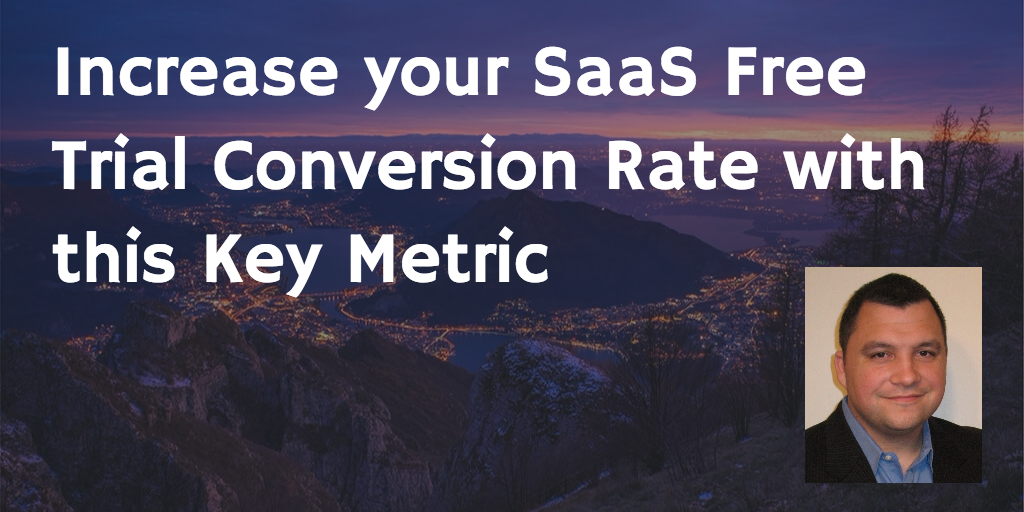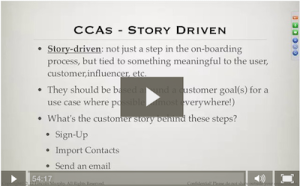 Before you read this article – which is really for companies that already have a good amount of customer data – I suggest reading a much more recent article “The Secret to Successful Customer Onboarding” which gives a much better perspective on how to design an onboarding (including Free Trial) flow.
Before you read this article – which is really for companies that already have a good amount of customer data – I suggest reading a much more recent article “The Secret to Successful Customer Onboarding” which gives a much better perspective on how to design an onboarding (including Free Trial) flow.
Once you’ve read that, come back to this article and consume with that context.
Okay, so most discussions about SaaS Metrics are some retelling of Bessemer Venture Partners’ Top 10 Rules of Cloud Computing and SaaS.”
The metrics that BVP talks about – CMRR, CAC, etc. are absolutely the core metrics to monitor at the high-level, I’m just not sure how many more posts we need telling us that.
What is often lacking – because the authors don’t actually know or they don’t want to share their secrets – in posts about SaaS metrics, is what you’re supposed to do with the metric once you have it… how can those things actually help you increase your free trial conversion rate?
It’s great that I know what my CAC is… now what? I know what the Average Selling Price is, what do I do now? I know that my churn rate is high… how do I stop it?
Unfortunately, most posts don’t go much further than the generally accepted SaaS metrics out there… and the reality is, to make the leaps forward that we all want, you have to go further.
A New Metric to Increase Your Free Trial Conversion Rate
So, one of my specialities is helping SaaS providers optimize their Free Trial for conversions. For many SaaS and Cloud providers, 100% of their customers go through the Free Trial as part of the self-service sales process, and yet for many providers, the Free Trial is barely an afterthought (even though it kicks out 97% of the potential customers that sign-up).
In most cases, when creating their “funnel” – perhaps in a product like KISSMetrics – a SaaS provider will analyze these steps:
Visited Site ==> Trial Sign-Up ==> Activation ==> Logged-In ==> Billed
At a super-high level this might mean something, but for practical purposes this doesn’t really help, and things like “number of logins” generally means very little without additional context.
So a few years ago I came up with a set of metrics that I called Common Conversion Activities – or CCA – that I defined as “The things that all or most paying customers do during their trial.”
It was a way to look at historical data and find patterns like “everyone who became a customer in the last 12 months did X, Y, and Z before they converted.” Or where that historical data was not available – either for a pre-launch startup or if that level of granularity was simply not there – we could use our understanding of the customer to create a hypothesis that “every customer will likely need to do X, Y, and Z before they convert.”
While not definitive or guaranteed to lead to conversions, CCA definitions gave us a much better place to start the optimization process than the “let ’em come in, kick the tires, cross our fingers and hope” Free Trial philosophy employed by most SaaS providers.
Now, for me and my clients, having the CCA metric completely changed everything… we now had a way of talking about this approach that made sense and – most importantly – put the emphasis of the Free Trial on the prospective customer and on the goal of converting them to a paying customer during the trial.
As I write this, it hit me that I’m not sure how well the CCA metric will be accepted to the SaaS industry, though I honestly don’t care if the “industry” adopts it… But I hope you do, though, so you’ll be as successful as possible.
The barriers to wide adoption at the industry level are that CCA isn’t a financial metric and it isn’t in any way standard across SaaS providers since it is unique to the customer experience of the provider… but again, that’s not why I came up with it or am publishing it.
Oh, and CCAs can – and should – be applied to Freemium offerings, with a couple of caveats: 1) Free Trials & Freemium are very different psychologically so make sure with Freemium you manage expectations with the free users that there is a Premium or Paid version and 2) the time to conversion could be much, much longer than the typical 30-day free trial due to the psychology mentioned in 1, but implementing CCAs should lower the time to conversion substantially, all else being equal.
Okay, so back in July 2012 I gave a 54-minute presentation where I introduced the next version of this ever-evolving set of metrics for measuring Free Trial success, the CCA, and I want to share that with you now.
Wait… you don’t actually know about CCAs yet… make sure you watch the video and grab the slides!
How To Increase your Free Trial Conversion Rate: Video & Slides
DISCLAIMER: The CCA approach to Free Trial Optimization is unlike any other approach I’ve ever heard of or seen regarding measuring success during Free Trials and moving prospects toward the goal of conversion (and then retention). I ask that you go into this with that realization as well as an open mind… this could significantly change your entire business!
While CCAs are a potential game-changer for you – and implementing CCAs in your Free Trial could easily allow you to DOUBLE your conversion rate in 30 days – there’s a lot more that needs to go into an optimized Free Trial.



